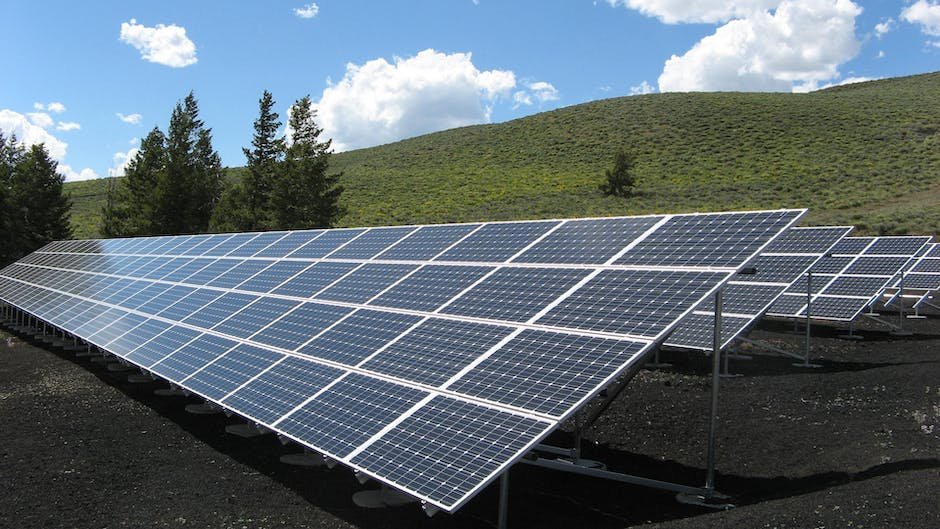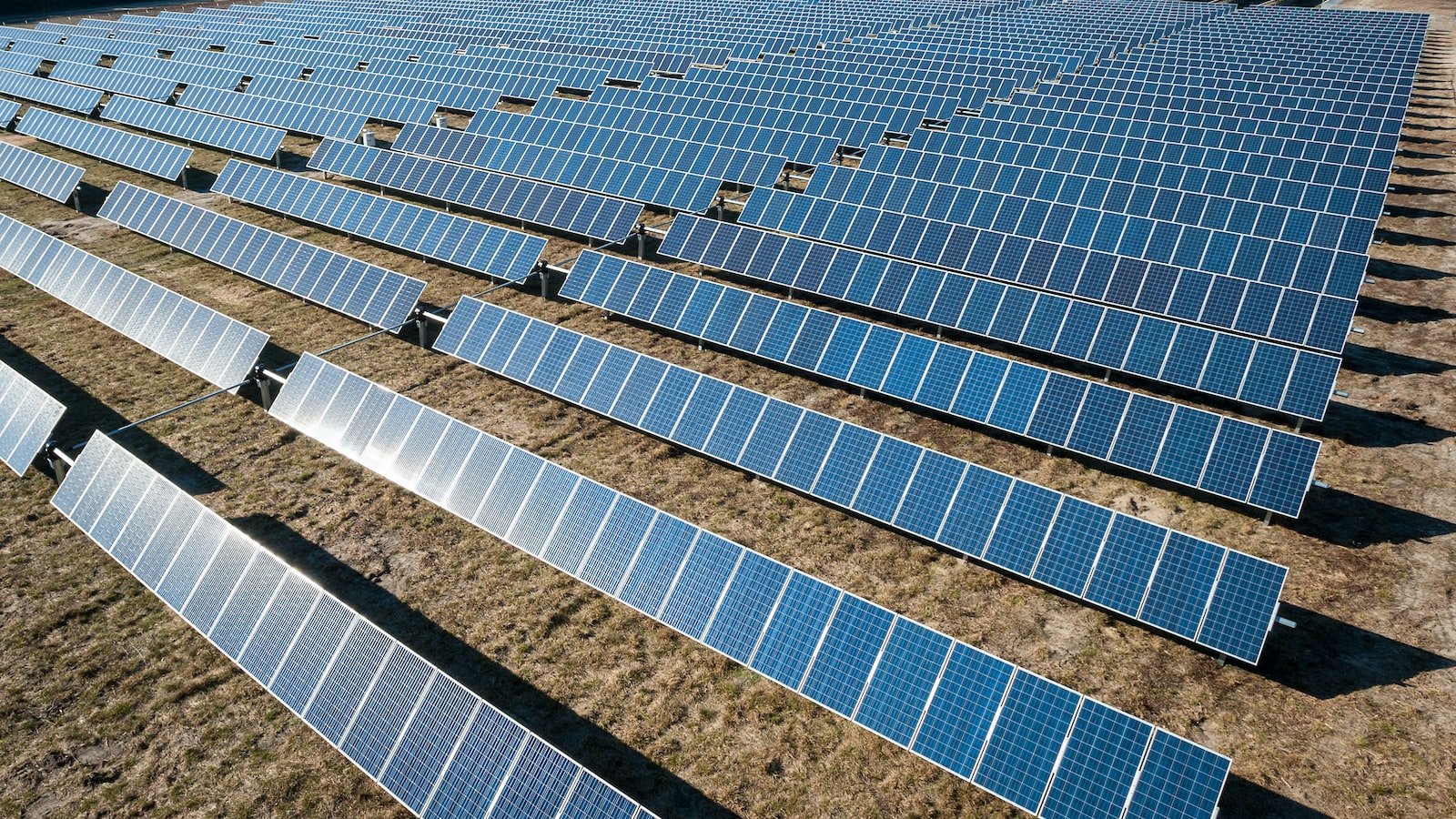Cities are often depicted as concrete jungles, towering structures that dominate the skyline, leaving little room for green spaces and a sustainable lifestyle. However, the rapid growth of urbanization has ignited a wave of innovation, urging city dwellers to explore alternative energy sources such as solar power. Imagine harnessing the sun’s energy right in the heart of your urban hive, transforming high-rise apartments, bustling commercial buildings, and bustling city streets into beacons of sustainability. In this article, we will uncover the secrets of utilizing solar power in the midst of urban chaos, enabling us to embrace a brighter and greener future.
Table of Contents
- Harnessing Solar Energy: A Sustainable Power Solution for Urban Hives
- Maximizing Solar Potential: Assessing and Optimizing Available Space
- Solar Implementation Strategies: Integrating Panels and Systems into Urban Architecture
- Cost-Effective Solar Solutions: Affordable Technologies and Financing Options
- Efficient Energy Management: Tips for Monitoring and Maintaining Solar Systems
- Q&A
- In Conclusion

Harnessing Solar Energy: A Sustainable Power Solution for Urban Hives
Solar energy is quickly emerging as a viable and sustainable power solution for urban hives. With the increasing energy demands of densely populated areas, harnessing the sun’s abundant resource has become an attractive alternative for powering our cities. By utilizing solar panels to convert sunlight into electricity, we can reduce our reliance on non-renewable energy sources and decrease carbon emissions, leading towards a greener future.
One of the significant advantages of solar energy is its scalability. Whether it’s small-scale installations for individual homes or large-scale solar farms integrated into the urban landscape, solar power systems can be tailored to meet the specific needs of urban areas. This flexibility makes solar energy an ideal choice for densely populated cities, where space is often limited.
- Cost-effective: Harnessing solar energy not only provides environmental benefits but also offers economic advantages. The cost of solar panel installations has significantly decreased over the years, making solar energy an increasingly affordable option. Additionally, the maintenance and operational costs of solar power systems are relatively low compared to conventional power sources.
- Resilient and reliable: Solar energy systems are durable and require minimal maintenance, making them highly reliable in urban hives where power outages can cause significant disruptions. Unlike fossil fuel-dependent grids, solar energy systems offer a decentralized approach to power generation, reducing the risk of power failures.
- Clean and sustainable: Solar energy is a clean and abundant renewable resource, and its adoption in urban areas can significantly reduce greenhouse gas emissions and air pollution. By transitioning to solar power, we can contribute to mitigating the environmental impact of urbanization and work towards a sustainable future.

Maximizing Solar Potential: Assessing and Optimizing Available Space
When it comes to harnessing the power of solar energy, one of the key factors is maximizing the available space to ensure optimal energy production. Assessing the available space is the first step in determining the solar potential of a location. This involves considering factors such as roof size, orientation, shading, and structural integrity.
Assessing Available Space:
- Roof Size: The size of the roof directly impacts the amount of solar panels that can be installed. A larger roof provides more surface area, allowing for a greater number of solar panels and thus generating more electricity.
- Orientation: The direction that the roof faces plays a crucial role in solar potential. Ideally, a south-facing roof has the highest exposure to the sun throughout the day, resulting in maximum energy production.
- Shading: Shading from trees, buildings, or other obstructions can significantly reduce the solar potential of a location. It’s crucial to assess the amount of shading present and determine if it can be mitigated to optimize solar energy generation.
- Structural Integrity: Before installing solar panels, it’s essential to evaluate the structural stability of the roof. Ensuring that the roof can bear the weight of the panels and withstand environmental factors is paramount for long-term success.
By carefully assessing and optimizing the available space for solar installations, individuals and businesses can maximize their solar potential and take a significant step towards renewable energy independence.

Solar Implementation Strategies: Integrating Panels and Systems into Urban Architecture
About Solar Implementation Strategies
Integrating solar panels and systems into urban architecture presents exciting opportunities to harness clean, renewable energy in bustling cities. By effectively incorporating solar technology into our urban landscapes, we can build sustainable communities that thrive on renewable energy while minimizing environmental impact. In this section, we will explore various strategies to seamlessly integrate solar panels and systems into urban architecture.
1. Rooftop Solar Installations:
Rooftops offer abundant space to install solar panels, making them a prime location for solar implementation in urban areas. By converting rooftops into solar energy generators, buildings can effectively generate clean power to meet their electricity needs. This strategy not only utilizes unused space but also reduces strain on the local power grid, helping to offset energy consumption and contribute to a greener city.
2. Facade-Integrated Solar Systems:
In urban settings where rooftop space may be limited, integrating solar photovoltaic (PV) panels into building facades can be an innovative solution. By incorporating PV panels seamlessly into the architectural design, buildings can generate solar energy while maintaining their aesthetic appeal. This strategy not only generates renewable energy but also reduces a building’s reliance on traditional power sources, resulting in long-term cost savings and carbon footprint reduction.
Cost-Effective Solar Solutions: Affordable Technologies and Financing Options
When it comes to adopting solar solutions, cost-effective options have become increasingly popular. With advancements in technology, harnessing the power of the sun is no longer an expensive venture limited to a privileged few. Affordable technologies are now accessible to a wide range of consumers, making solar energy a viable choice for households and businesses alike.
One of the key factors driving the affordability of solar solutions is the innovation in panel manufacturing. Companies across the globe are constantly pushing the boundaries of photovoltaic technologies, resulting in higher energy efficiency and reduced manufacturing costs. This means better quality solar panels at lower prices, offering consumers a great return on investment.
In addition to affordable technologies, financing options play a crucial role in making solar solutions accessible to everyone. Many financial institutions now offer solar loans with competitive interest rates and flexible payment terms. This enables customers to install solar panels without a significant upfront cost. Moreover, incentives and grants provided by governments and utilities further reduce the financial burden of going solar. By maximizing these financing options, individuals and businesses can embrace sustainable energy solutions without straining their budgets.
- Improved panel manufacturing: Higher energy efficiency at reduced costs
- Access to solar loans: Competitive interest rates and flexible payment terms
- Government incentives: Boosting affordability through grants and tax benefits
With cost-effective technologies and favorable financing options, harnessing the power of the sun has never been more accessible. Embracing solar solutions not only saves on long-term energy costs but also reduces the carbon footprint. By taking advantage of affordable solar options, individuals and businesses can contribute to a cleaner and more sustainable future.
Efficient Energy Management: Tips for Monitoring and Maintaining Solar Systems
Monitoring Solar Systems for Optimal Energy Management
Effective energy management is crucial for maximizing the performance and longevity of your solar system. By regularly monitoring and maintaining your solar system, you can ensure its efficiency, reduce energy waste, and save money in the long run. Here are some helpful tips to consider:
- Regular Inspections: Schedule routine inspections to identify any potential issues or malfunctions in your solar system. Check for loose connections, damaged wiring, or any physical damage caused by weather or wildlife.
- Monitor Energy Production: Invest in a solar monitoring system that provides real-time data on energy production. This allows you to track your system’s performance, detect any significant changes in energy output, and take appropriate action to address any underperformance.
- Clean Solar Panels: Keep your solar panels clean and free from dust, leaves, or debris that may obstruct sunlight. Regularly inspect and clean the panels to ensure maximum sunlight absorption, which directly affects energy production.
- Monitor Inverter Performance: The inverter is an integral part of your solar system, converting direct current (DC) energy into usable alternating current (AC) energy. Regularly check your inverter’s performance to detect any faults or drop in efficiency.
- Track Energy Consumption: Monitoring your energy consumption can provide insights into your electricity usage patterns. By analyzing this data, you can make informed decisions to optimize energy usage and reduce wastage.
Efficiency in energy management is a continuous effort that requires proactive monitoring and maintenance. By following these tips and staying vigilant, you can ensure that your solar system functions optimally, maximizing its energy generation potential and contributing to a greener future.
Q&A
How can I incorporate solar power into my urban hive?
You can start by installing solar panels on your rooftop or balcony to capture the sun’s energy. Additionally, consider using solar-powered lighting, water heaters, and appliances to maximize your use of clean energy.
Can I use solar power even if I live in an apartment?
Absolutely! If you have access to a balcony or a shared rooftop, you can install smaller solar panels or even join a community solar project. Many cities now encourage apartment dwellers to harness solar energy and offer incentives for installations.
Will solar power be enough to meet all my energy needs?
It depends on your energy consumption and the size of your solar setup. While solar power can significantly reduce your reliance on the grid, it may not always be sufficient for meeting all your energy needs. However, with energy-efficient appliances and proper management, you can minimize your reliance on the grid.
How do I know if my urban hive is suitable for solar power?
Ideally, your rooftop or balcony should be south-facing or have ample exposure to sunlight throughout the day. If it’s partially shaded, you may need to assess the impact on your solar power generation. Consulting with a professional can help determine the feasibility of solar power for your specific situation.
Are there any financial incentives for using solar power in urban areas?
Many countries and cities offer financial incentives, such as tax credits, rebates, and net metering programs that allow you to sell excess energy back to the grid. Check with your local municipality or energy providers to find out about available incentives in your area.
How can I make the most of solar power in an urban setting with limited space?
You can maximize limited space by opting for smaller, more efficient solar panels and considering vertical installations. Additionally, integrating energy storage systems like batteries can help you store excess energy for later use and optimize your solar power generation even with limited space.
Are there any maintenance requirements for solar power systems?
Solar panels generally require very little maintenance. Periodically cleaning the panels and ensuring they are free from debris will optimize their efficiency. It’s also recommended to have a professional check the system regularly to identify any potential issues or for necessary repairs.
In Conclusion
As you step into the radiant future of sustainable living, we hope this urban hive guide has ignited your curiosity and enthusiasm about harnessing the boundless power of the sun. Remember, as city dwellers, we possess the remarkable ability to reshape our concrete jungles into thriving green oases. Embracing solar power is not merely a choice but an invitation to embrace the synergy between nature and urban life.
By now, you comprehend that solar energy isn’t a distant notion reserved for those blessed with expansive landscapes; it’s an everyday reality pulsating above our heads. So, let’s set our sights high and skyward, capturing the sun’s abundant energy to revamp our urban environments.
As you embark on this transformative journey, don’t hesitate to reach out to local solar enthusiasts, organizations, and even your neighbors. Together, we can turn every rooftop, balcony, and communal space into a power station, feeding the collective effort to combat climate change and create a more sustainable tomorrow.
Unleash your imagination, experiment with innovative solar technology, and let the city’s vibrant pulse become interwoven with the gentle pulse of the sun. Imagine strolling through your neighborhood, gazing up at towering skyscrapers adorned with shimmering solar panels. Envision communal gardens awash with greenery, powered by solar energy. Picture charging your electric vehicle while savoring the city’s breathtaking skyline, all thanks to the glowing orb above.
As the sun sinks below the horizon, let its beautiful descent be a reminder of the power we all possess to make a difference. Embracing solar power in your urban hive is not just about environmental stewardship or financial savings—it is an act of solidarity with the planet and your community.
So, go forth and discover the limitless potential of solar energy in your urban haven. Let the sun’s dazzling radiance illuminate your life and inspire others as you embark on this transformative journey. Together, we’ll create a greener, cleaner, and more sustainable world, one sun-filled day at a time.
As an affiliate, my content may feature links to products I personally use and recommend. By taking action, like subscribing or making a purchase, you’ll be supporting my work and fueling my taco cravings at the same time. Win-win, right?
Want to read more? Check out our Affiliate Disclosure page.